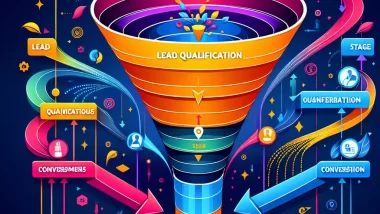Testing and Optimizing Your Emails
When it comes to testing and optimizing your emails, it’s crucial to pay attention to details that can make a significant impact on the success of your email campaigns. A/B testing is a popular method used by marketers to understand what resonates best with their audience. By creating variations of your emails and testing them against each other, you can gather insights on what subject lines, content, or calls to action are more effective in driving engagement and conversions.
In addition to A/B testing, optimizing your emails involves continuous refinement based on data and results. It’s important to analyze the performance of your emails regularly and make data-driven decisions to improve their effectiveness. Elements like personalization, timing, design, and copywriting can all be optimized to enhance the overall performance of your email sequences. By constantly testing, measuring, and adjusting your emails, you can ensure that you are delivering content that resonates with your subscribers and drives desired outcomes.
Strategies for A/B testing and optimizing email performance
A/B testing your emails is a crucial aspect of optimizing your email performance. By testing different elements such as subject lines, email content, call-to-action buttons, and send times, you can gain valuable insights into what resonates best with your audience. It’s essential to test one element at a time to accurately measure the impact of each change and make data-driven decisions to improve your email engagement rates.
Another strategy for optimizing email performance is to segment your audience based on various criteria such as demographics, purchase history, or past interactions with your emails. By sending targeted emails to specific segments, you can deliver more relevant content that is likely to resonate with each group. This personalization can lead to higher open rates, click-through rates, and ultimately, more conversions. Experiment with different segmentation strategies to determine what works best for your audience and continuously refine your approach based on the results.
Setting Up Triggers and Segmentation
When setting up automated email sequences, triggers and segmentation play a crucial role in ensuring that your emails reach the right audience at the right time. Triggers allow you to send emails based on specific actions or behaviors taken by your subscribers, such as signing up for a newsletter or making a purchase. By implementing triggers effectively, you can personalize your emails and create a more engaging experience for your audience.
Segmentation involves dividing your email list into smaller, targeted groups based on certain criteria, such as demographics, behaviors, or interests. By segmenting your audience, you can tailor your email content to be more relevant and appealing to each group, ultimately leading to higher open rates and click-through rates. Additionally, segmentation allows you to send more personalized and targeted emails, which can improve overall engagement and conversion rates.
How triggers and segmentation enhance automated email sequences
Triggers and segmentation are powerful tools that can significantly enhance the effectiveness of automated email sequences. By using triggers, you can send emails to your subscribers based on specific actions they take, such as signing up for a newsletter or making a purchase. This level of personalization can help you deliver more relevant content to your audience, leading to higher engagement and conversion rates.
Segmentation allows you to divide your subscriber list into smaller groups based on demographics, preferences, or behaviors. This enables you to tailor your email content to suit the unique interests and needs of each segment. By sending targeted emails to different groups, you can increase the likelihood of recipients engaging with your messages and taking the desired actions. Ultimately, triggers and segmentation work hand in hand to create a more personalized and effective email marketing strategy.
Monitoring and Analyzing Email Metrics
Monitoring and analyzing email metrics is crucial for determining the success of your automated email sequences. By tracking key metrics such as open rates, click-through rates, conversion rates, and unsubscribe rates, you can gain valuable insights into how your audience is engaging with your emails. These metrics provide information on the effectiveness of your subject lines, content, and call-to-action buttons, helping you understand what resonates with your subscribers and what needs improvement.
Analyzing these metrics over time can also help you identify trends and patterns in your email campaign performance. By comparing the performance of different email variations, you can uncover valuable insights that can inform your future email marketing strategies. Additionally, monitoring email metrics allows you to segment your audience based on their behavior, interests, and preferences, enabling you to create more targeted and personalized email campaigns that yield higher engagement and conversion rates.
Key metrics to track and analyze for email campaign success
Tracking and analyzing key metrics is essential in determining the success of your email campaigns. One crucial metric to monitor is the open rate, which indicates how many recipients actually open your emails. A low open rate may suggest that your subject lines are not engaging enough, while a high open rate signifies a strong level of interest from your audience.
Click-through rate (CTR) is another vital metric to consider, as it shows the percentage of recipients who clicked on a link within your email. A high CTR demonstrates that your content is compelling and resonates with your subscribers. Conversely, a low CTR might indicate that your call-to-action needs improvement or that your content is not relevant to your audience. By closely monitoring these key metrics, you can make informed decisions to optimize your email campaigns and enhance overall performance.
FAQS
What is an automated email sequence?
An automated email sequence is a series of pre-written emails that are sent out automatically based on triggers or a predefined schedule.
How can I test and optimize my automated emails?
To test and optimize your automated emails, you can use A/B testing to compare different email elements such as subject lines, content, and CTAs to see which performs better.
How do triggers and segmentation enhance automated email sequences?
Triggers and segmentation allow you to send targeted emails to specific segments of your audience based on their actions or attributes, increasing the relevance and effectiveness of your automated email sequences.
What are key metrics to track and analyze for email campaign success?
Key metrics to track and analyze for email campaign success include open rates, click-through rates, conversion rates, bounce rates, and unsubscribe rates. Monitoring these metrics will help you understand the performance of your automated email sequences and make necessary adjustments for improvement.
Why is it important to monitor and analyze email metrics?
Monitoring and analyzing email metrics is important to understand how your automated email sequences are performing, identify areas for improvement, and make data-driven decisions to optimize your email campaigns for better results.
Related Links
Personalizing Automated Emails
Top Email Marketing Tips for Web Marketers



